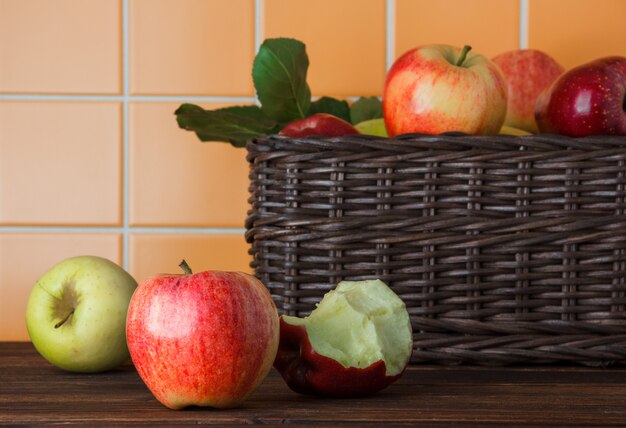Keeping Pears Fresh: The Complete Guide to Storing Pears in Your Refrigerator
Pears are not only a delicious and versatile fruit but also a powerhouse of nutrients. However, to truly enjoy their goodness, proper storage is key. Whether you've picked them up from the farmers' market or harvested them from your backyard orchard, knowing how to store pears in your refrigerator can extend their freshness and flavor. Dive into this comprehensive guide to understand the best practices for preserving your pears, ensuring none go to waste.
🍏 Understanding Pear Ripeness
Before we delve into the storage techniques, it's crucial to grasp how pears ripen. Unlike many fruits, pears generally do not ripen well on the tree. Instead, they’re often harvested when mature but still firm and allowed to ripen off the tree. This process ensures they develop that perfect buttery texture and sweet flavor. Recognizing this is the first step to effectively storing them.
How to Identify Ripe Pears
- Feel: Gently press near the stem with your thumb. If it gives slightly, the pear is ripe.
- Look: A change in color, especially around the stem, can indicate ripeness depending on the pear variety.
- Smell: A fragrant aroma can also be a sign of ripeness.
📦 Proper Storage Techniques
Storing Unripe Pears
Unripe pears should not be stored in the refrigerator right away. Here’s how to handle them until they’re ready for cold storage:
Ripen at Room Temperature: Place your pears in a single layer at room temperature. Avoid direct sunlight.
Paper Bag Method: To speed up the ripening process, place pears in a paper bag with a ripe banana. Ethylene gas from the banana will help the pears ripen faster.
Transitioning Pears to the Refrigerator
Once your pears have ripened, they should be moved to the refrigerator to extend their shelf life:
Optimal Shelf: Store ripe pears in the crisper drawer, which provides a humid environment ideal for preserving moisture.
Temperature Control: Keep them at a steady cold temperature. Pears typically store well at refrigerator temperature.
Separate Storage: If you've significant quantities, don't bag them tightly as moisture buildup can lead to faster deterioration. Use perforated plastic bags or breathable containers.
Storing Cut Pears
Once a pear is cut, its shelf life decreases significantly. Here’s how to ensure maximum freshness:
Lemon Juice Coating: Apply lemon juice to the cut surface. This natural method can help prevent browning.
Airtight Containers: Store sliced pears in airtight containers to reduce exposure to air.
Quick Tips for Storage 🌟
- Do Not Wash Before Storing: Moisture can encourage spoilage. Wash pears only before consuming.
- Keep Away from Strong Odors: Pears can absorb odors, so store them away from strongly scented foods.
- Refrigerator Cleanliness: Ensure your refrigerator is clean and odors are minimal to aid in keeping your pears fresh.
🍐 Understanding Different Varieties
Each pear variety has unique characteristics that can affect how long they remain fresh in the refrigerator.
Popular Pear Varieties and Storage
- Bartlett: Known for their juiciness and buttery texture. Store ripe Bartlets for up to a week.
- Bosc: Firm and crisp, making them excellent for baking. Bosc pears can last slightly longer due to their firmer texture.
- Anjou: Sweet with little hint of tartness. Similarly, these can last a week refrigerated.
All-in-One Storage Techniques 📋
| Type of Pear | Ripening Method | Refrigeration Duration |
|---|---|---|
| Bartlett | Room temperature/paper bag | Up to 1 week |
| Bosc | Room temperature | 1-2 weeks |
| Anjou | Room temperature/paper bag | Up to 1 week |
🥗 Enjoying Stored Pears
Beyond just snacking, pears can transform your dishes. Here are some delightful ideas:
Cooking with Pears
- Salads: Add sliced pears to your salads for a sweet crunch.
- Baking: Incorporate pears in pies or tarts for dessert.
- Preserves and Jams: A wonderful way to enjoy pears year-round.
Pear Pairings
Pair pears with cheese, nuts, or even wine for sophisticated appetizers or snacks. Their subtle sweetness and refreshing juiciness balance rich, salty, or robust flavors.
Preserving for Longer Periods
For those with a bountiful harvest or bulk purchase, consider other methods to make your pears last beyond simple refrigeration.
Freezing Pears 🧊
- Prepare: Wash, core, and peel pears.
- Blanch: Quickly blanch pears in boiling water to maintain texture.
- Flash Freeze: Lay slices on a baking sheet and freeze before transferring to a bag.
- Storage: Use freezer-safe bags or containers for long-term storage.
Canning Pears
Canning is another technique that secures the taste and nutritious benefits of pears for several months.
- Prep: Peel, core, and slice.
- Syrup: Create a light syrup using sugar and water.
- Can: Follow proper canning techniques to seal pears in jars.
Fresh vs. Processed: The Nutritional Perspective
Fresh pears boast a wealth of fiber, antioxidants, and vitamins. When processing or storing, aim for methods that retain these nutritional benefits as much as possible. While freezing can maintain most benefits, canning can diminish some vitamins but still offer a nutritious snack when fresh isn’t available.
Final Pear-Handling Tips 🚀
To ensure you are doing the most with your pears, remember:
- Check Regularly: Inspect your stored pears frequently to use them before spoilage.
- Cycle Through: Organize your fruits so older ones are prominent and used first.
- Smart Storage: Combining different storage methods can maximize freshness and usability.
Knowing how to properly store pears in your refrigerator and beyond extends their delightful lifespan and ensures you make the most out of every purchase or harvest. With these expert tips and practical steps, you’re equipped to enjoy pears at their peak whenever the mood strikes. Bon appétit! 🥂
